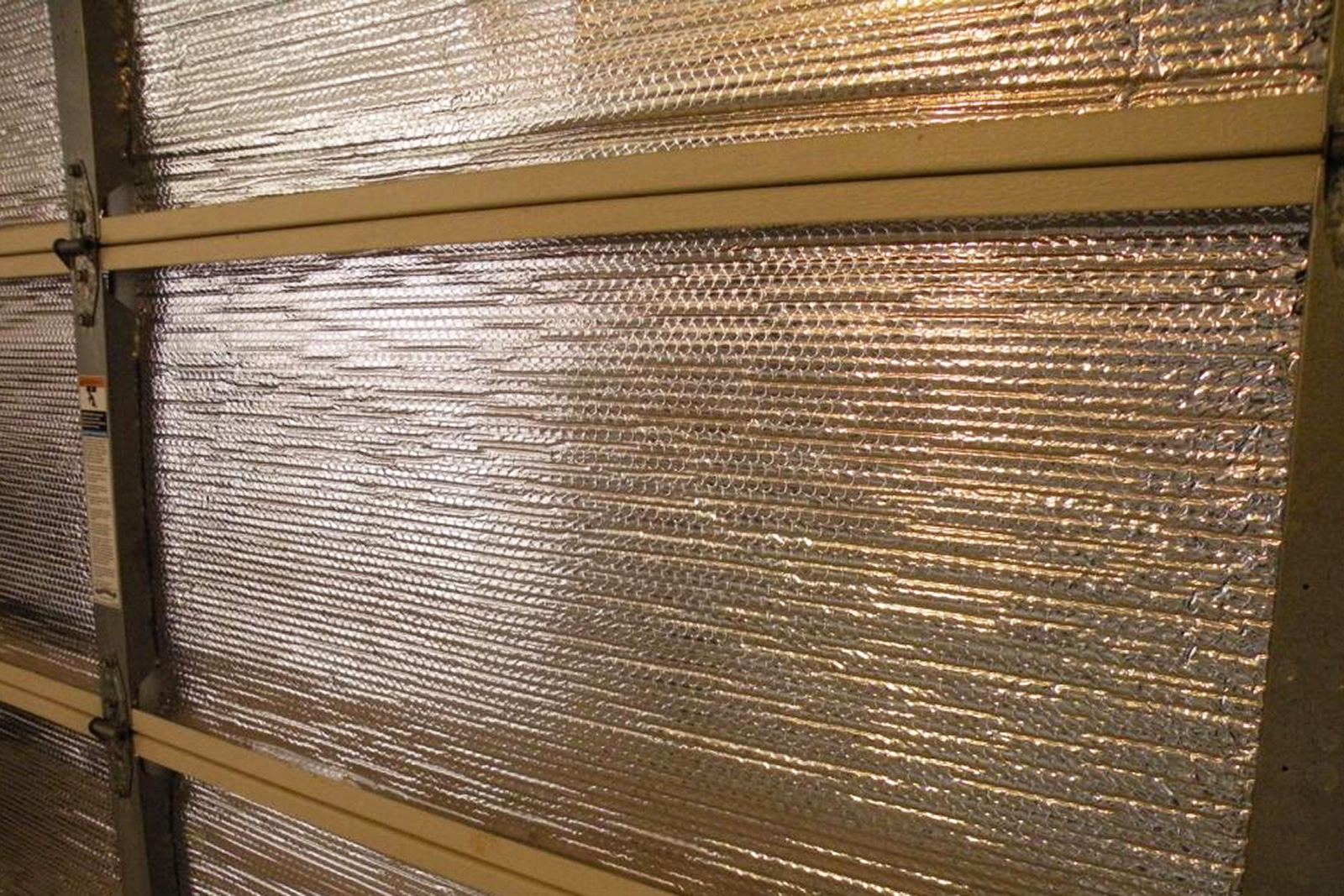Looking to beat the heat in your garage during scorching summers? Wondering how to insulate your garage door to keep it cool? Well, you’ve come to the right place! In this article, we’ll explore some simple and effective tips on how to insulate a garage door in a hot climate. Say goodbye to sweltering temperatures and hello to a more comfortable garage!
Insulating your garage door can make a significant difference in maintaining a cooler environment. By preventing heat from seeping in, you can create a more enjoyable space for various activities. So, whether you use your garage for parking, storage, or a workshop, insulating the door can help save energy and improve comfort. Now, let’s dive into some practical methods to get that garage temperature down and keep cool in the blazing heat!
When it comes to insulating a garage door in a hot climate, there are a few simple techniques you can try. From using insulation panels to weatherstripping, we’ll discuss different options to suit your needs. So, let’s get started and transform your garage into a refreshingly cool oasis where you can retreat from the summer heat!
- Measure the garage door panels and purchase insulation material accordingly.
- Clean the door surface using soap and water, removing any dirt or debris.
- Cut the insulation material to fit each panel and attach it using adhesive or tape.
- Apply weatherstripping around the edges to seal off any gaps.
- Consider adding a radiant barrier to reflect heat away from the door.
- Regularly maintain and clean the insulation to ensure it stays effective.

How to Insulate a Garage Door in a Hot Climate: Beat the Heat and Save Energy
Are you tired of your garage feeling like an oven during the scorching hot summer months? Insulating your garage door can make a significant difference in temperature control and energy efficiency. Whether you use your garage as a workspace, storage area, or parking spot for your car, insulating the garage door can help keep it cool and comfortable. In this article, we will explore various methods and materials to insulate a garage door in a hot climate, allowing you to beat the heat and save energy at the same time.
Why Insulate Your Garage Door?
Before diving into the insulation methods, let’s understand why it is essential to insulate your garage door in a hot climate. A garage door acts as a barrier between the outside elements and your garage’s interior. Without adequate insulation, heat from the sun penetrates through the door, turning your garage into a sweltering space. Insulation helps in maintaining a consistent temperature inside the garage, making it more comfortable for any activities you may want to pursue. Additionally, proper insulation prevents heat transfer, reducing the strain on your HVAC system and ultimately lowering your energy bills.
Insulating your garage door is not only beneficial for maintaining a comfortable temperature but also for protecting any valuable belongings you may store in your garage. Extreme heat can damage items such as tools, electronics, and other sensitive materials. By insulating your garage door, you create a controlled environment that minimizes the risk of damage due to temperature fluctuations.
Methods of Garage Door Insulation
When it comes to insulating a garage door in a hot climate, there are various methods to consider. Each method has its own pros and cons, so it’s important to choose the one that suits your needs and budget best. Here are three commonly used methods:
- Batt Insulation: This method involves attaching fiberglass or foam board insulation to the inside of the garage door using adhesive. Batt insulation is relatively easy to install and provides good insulation properties. However, it can be bulky and may reduce the headroom in your garage.
- Reflective Foil Insulation: Reflective foil insulation consists of a layer of foil attached to a foam or bubble wrap material. It works by reflecting radiant heat away from the garage door. This method is lightweight and easy to install. However, it may not provide as much insulation as other methods.
- Insulated Garage Door Panels: If you are looking for a more convenient solution, insulated garage door panels are worth considering. These panels are made of insulation material sandwiched between layers of steel or aluminum. They offer excellent insulation properties and can be installed as a replacement for your existing garage door panels. However, they can be more expensive than other methods.
It’s important to note that the effectiveness of insulation also depends on factors such as the climate, garage door material, and the level of insulation already present. Consulting with a professional or doing research specific to your climate and garage door type can help you make an informed decision.
The Benefits of Garage Door Insulation
The benefits of insulating your garage door in a hot climate go beyond just maintaining a comfortable temperature. Here are some advantages to consider:
- Energy Efficiency: Insulated garage doors help regulate temperature, reducing the need for HVAC usage and ultimately lowering energy bills.
- Noise Reduction: Insulation materials can also help reduce noise transmission, creating a quieter environment inside your garage.
- Protecting Belongings: Insulation prevents extreme temperatures from damaging items stored in your garage, such as electronics, tools, or delicate materials.
- Increased Resale Value: A well-insulated garage door can add value to your home, making it an attractive feature for potential buyers in the future.
By insulating your garage door, you create a more comfortable and functional space that can serve multiple purposes while reducing energy consumption and potential damage to your belongings.
How to Insulate a Garage Door in a Hot Climate
- Choose an insulation material that has a high R-value to effectively block heat transfer.
- Apply weatherstripping around the edges of the garage door to seal gaps and prevent air leakage.
- Consider installing a reflective barrier or radiant barrier on the inside of the garage door to reflect heat away.
- Add insulation panels or foam board to the interior surface of the garage door for extra insulation.
- Use a garage door insulation kit to easily and effectively insulate your garage door.
Frequently Asked Questions
Interested in insulating your garage door in a hot climate? Check out these commonly asked questions!
1. Why is it important to insulate a garage door in a hot climate?
Insulating your garage door in a hot climate is crucial for several reasons. First, it helps maintain a comfortable temperature inside your garage, protecting your vehicles and other belongings from extreme heat. Insulation acts as a barrier, preventing hot air from seeping into the garage and raising the internal temperature. This can help reduce the risk of heat damage to items stored in the garage, such as paint, chemicals, or electronic equipment.
Additionally, insulating the garage door can have energy-saving benefits for your home. When the garage is insulated, it becomes less susceptible to external heat transfer, keeping the overall temperature of your house more stable. This reduces the workload on your air conditioning system, leading to potential energy savings and lower utility bills.
2. What materials are suitable for insulating a garage door in a hot climate?
When it comes to insulating a garage door in a hot climate, there are various materials you can use. One popular option is reflective foil insulation. This type of insulation helps to reflect radiant heat away from the garage door, keeping the interior cooler. Reflective foil insulation typically consists of a layer of foam or fiberglass with a reflective surface facing outwards.
Another suitable material is rigid foam insulation. This type of insulation provides excellent thermal resistance and helps to block heat from entering the garage. Rigid foam insulation boards are lightweight and easy to install. They can be cut to fit the dimensions of your garage door and then attached using adhesive or fasteners.
3. Can I install insulation on an existing garage door?
Absolutely! It is possible to add insulation to an existing garage door. One option is to use insulation panels or kits specifically designed for garage doors. These panels are typically made of foam or fiberglass and can be attached to the inside surface of the garage door, providing an additional layer of insulation.
Another option is to apply a reflective coating to the exterior of the garage door. Reflective coatings are designed to reflect heat and sunlight away from the door. This can help reduce heat transfer and maintain a cooler temperature inside the garage.
4. How do I measure the insulation effectiveness of my garage door?
To measure the effectiveness of your garage door insulation, you can use the R-value rating system. The R-value measures the thermal resistance of the insulation material. The higher the R-value, the better the insulation’s ability to resist heat flow. When choosing insulation for your garage door, look for products with higher R-values for better insulation performance.
Keep in mind that other factors, such as the overall insulation of the garage, the presence of air leaks, and the garage’s exposure to direct sunlight, can also impact the effectiveness of the insulation. It’s important to ensure proper installation and consider any additional steps to improve insulation, such as sealing gaps or weatherstripping around the garage door.
5. Are there any additional benefits to insulating a garage door in a hot climate?
Absolutely! Besides the primary benefits of temperature control and energy savings, insulating a garage door in a hot climate offers some additional advantages. Insulation helps reduce external noise transmission, making your garage a quieter space. This can be particularly beneficial if your garage is used as a workspace or for activities that require a peaceful environment.
Furthermore, an insulated garage door can improve the overall value and appeal of your home. It enhances the aesthetics of your property and can even provide extra soundproofing for adjacent rooms or living spaces. Insulation adds value by making your garage more versatile, comfortable, and energy-efficient.

Summary:
Insulating a garage door in a hot climate can help keep your garage cooler. There are a few ways to do this. One option is to use reflective insulation, which reflects the heat away from the door. Another option is to use foam board insulation, which helps keep the hot air out. It’s important to make sure the insulation is properly installed and sealed to be effective. By insulating your garage door, you can create a cooler space for your car or for other activities in your garage.
When insulating a garage door, it’s also important to consider ventilation. Adding vents or fans can help circulate the air and prevent heat buildup. Additionally, you may want to consider weatherstripping the edges of the door to help seal any gaps. This prevents hot air from seeping in and keeps your garage more comfortable. By taking these steps, you can make your garage a more pleasant place, even in hot climates.

